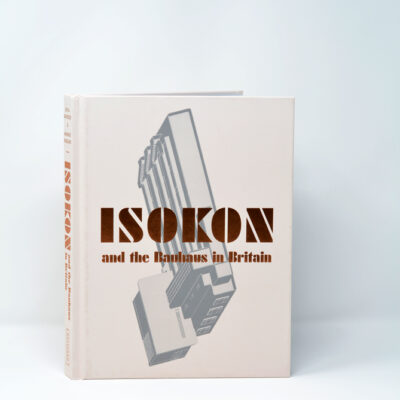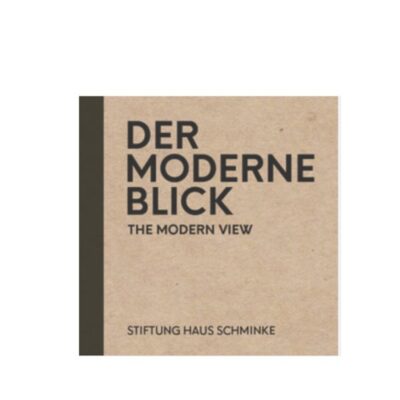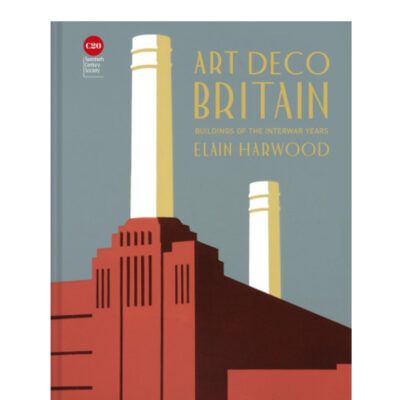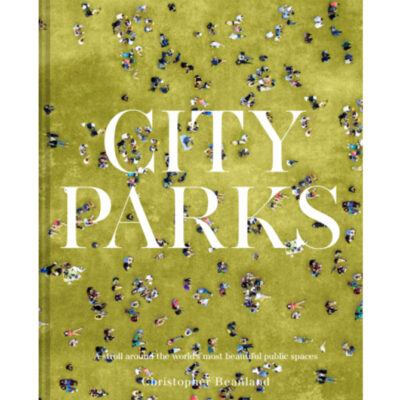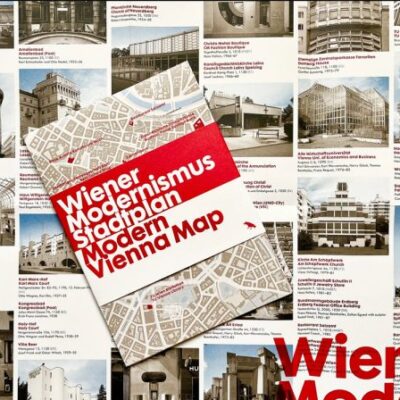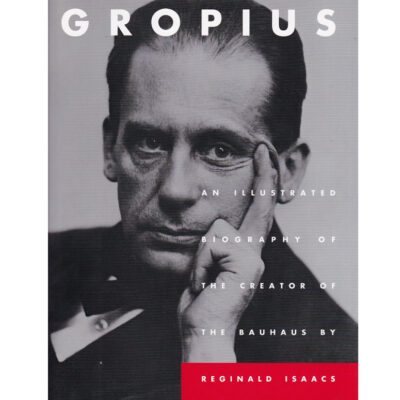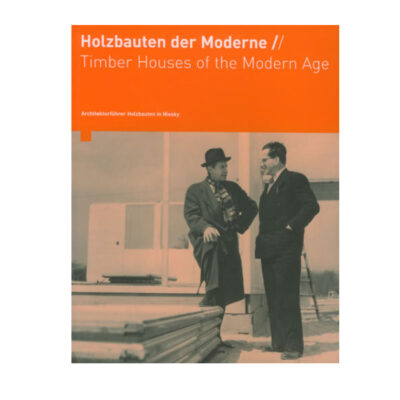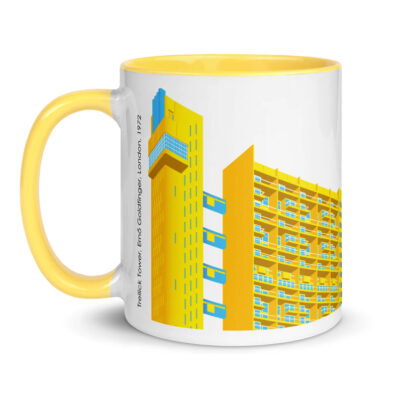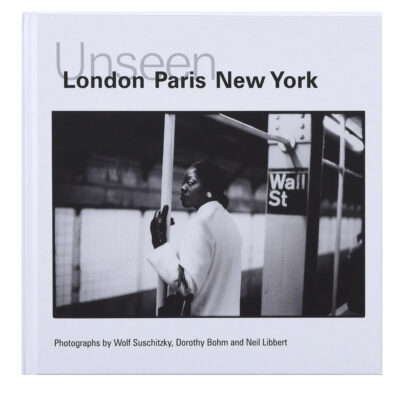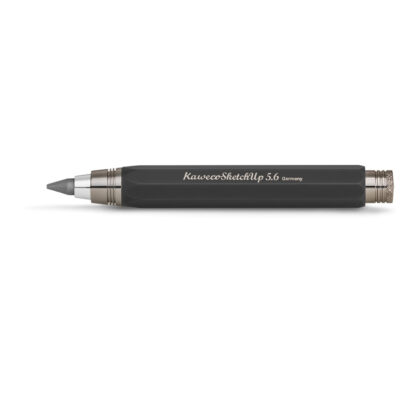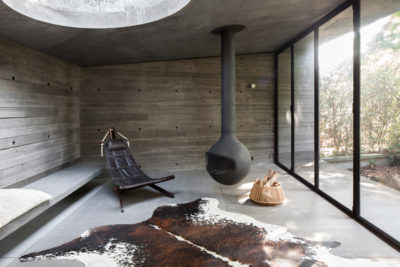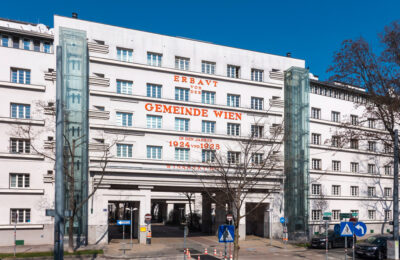Concrete Menageries:
Why were Zoos drawn to Modernist design?
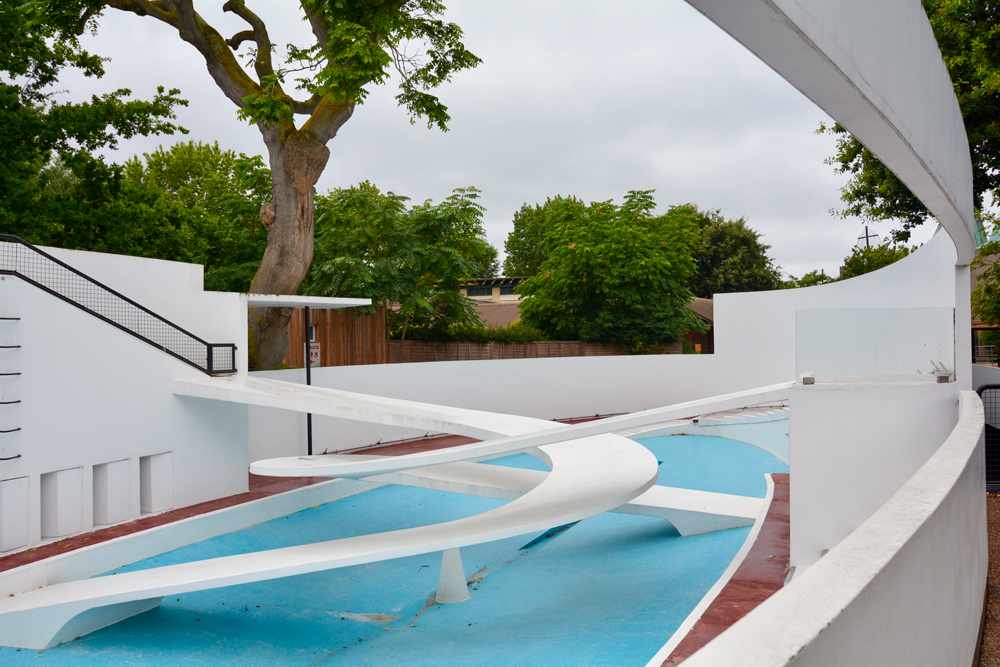
Penguin Pool, London Zoo, architect Berthed Lubetkin Image H Morris
We’ve featured the modernist architecture of two zoos in Britain, Regent’s Park and Dudley. In the 1930s, they were proud to commission the Tecton Group, the architectural practice of the emigre Berthold Lubetkin, to design structures that continue to impress today. This was at a time when the country at large was equivocal about modernist buildings. So, why were zoos attracted to modernist design?
As the zoos fumbled towards a raison d’être for their existence, modernism and modernist architects were on a mission of social and societal improvement
In the first half of the twentieth century, zoos saw themselves as institutions of cultural and civic pride and promoters of modern ideals, human progress and a greater understanding of the mysteries of biology and human control over nature. They were centres of research and discovery and while providing entertainment, they were, they believed, educating the public. While conservation and the breeding of species is now central to the mission of zoos, the early beginnings of this work in the first half of the twentieth century meant that zoos began to see themselves as the protectors of species. We also know that a fascination with eugenics took root among some in the field of biology and this undoubtedly played into another important element of the whole zoo concept, colonialism and supremacy.
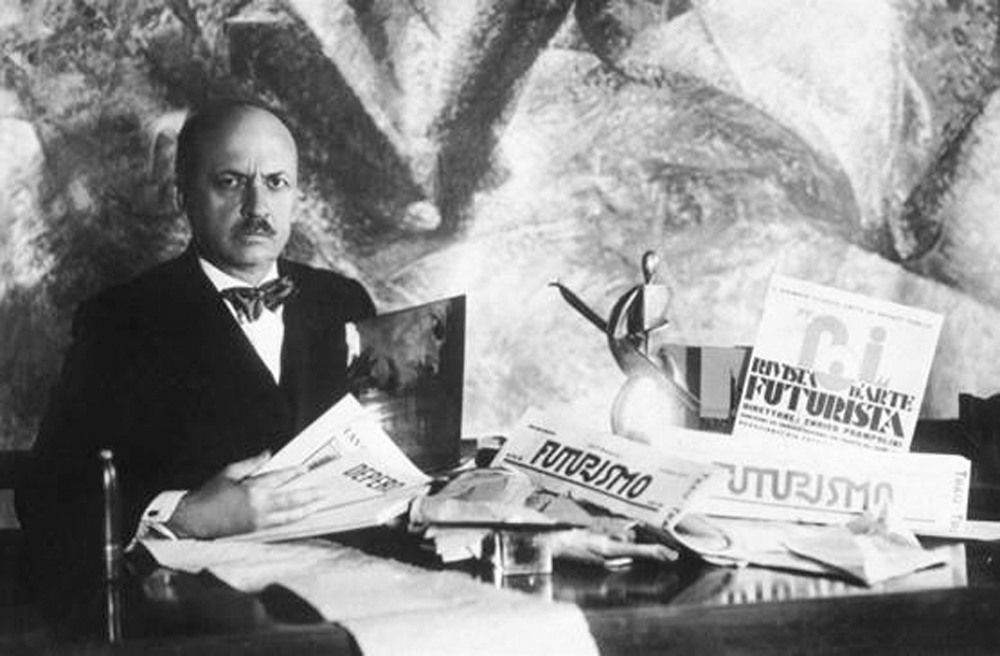
Filippo Tommaso Marinetti’s Manifesto of Futurism
As the zoos fumbled towards a raison d’être for their existence, modernism and modernist architects were on a mission of social and societal improvement. They published manifestos setting out their philosophy that went far beyond their buildings’ design and engineering issues. For example, Marinetti’s Futurist Manifesto (1909), Tatlin and Rodchenko’s Founding Manifesto of Constructivism (1921), The Bauhaus Manifesto (1919), the various declarations of CIAM between 1928 and 1959 and, of course, at least three works by Le Corbusier. There were many others, some 200 it’s been estimated.
Modernism and zoos both saw themselves doing the work of improving humanity and so it was a natural step for zoos to embrace modernist architecture.
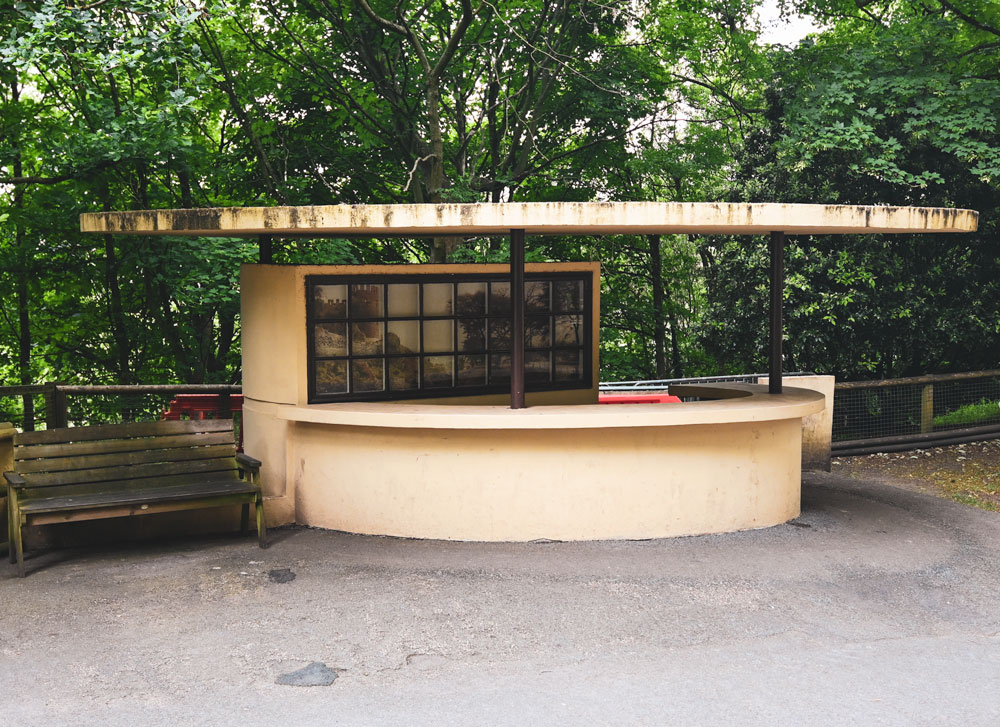
Kiosk, Dudley Zoo, Tecton Berthold Lubetkin Image Howard Morris
Early architectural examples from this period tended to incorporate clean lines, functional forms, and sometimes raw materials like concrete. Here are some notable zoos and buildings from that period that reflect modernist and even proto-brutalist architectural tendencies:
1. Zoo Basel (Zoologischer Garten Basel) – Basel, Switzerland
• Architectural Highlights: Zoo Basel has some early modernist elements. The Penguin Pool (1939), designed by architect Heini Dalcher, has a modernist style with clean, functional lines.
• Notable Features: The Penguin Pool’s use of concrete and simple, geometric shapes reflects early modernist influences. While not fully brutalist, the stark materials and minimalist design were innovative for a zoo structure of that era.
2. Paris Zoo (Parc Zoologique de Paris) – Paris, France
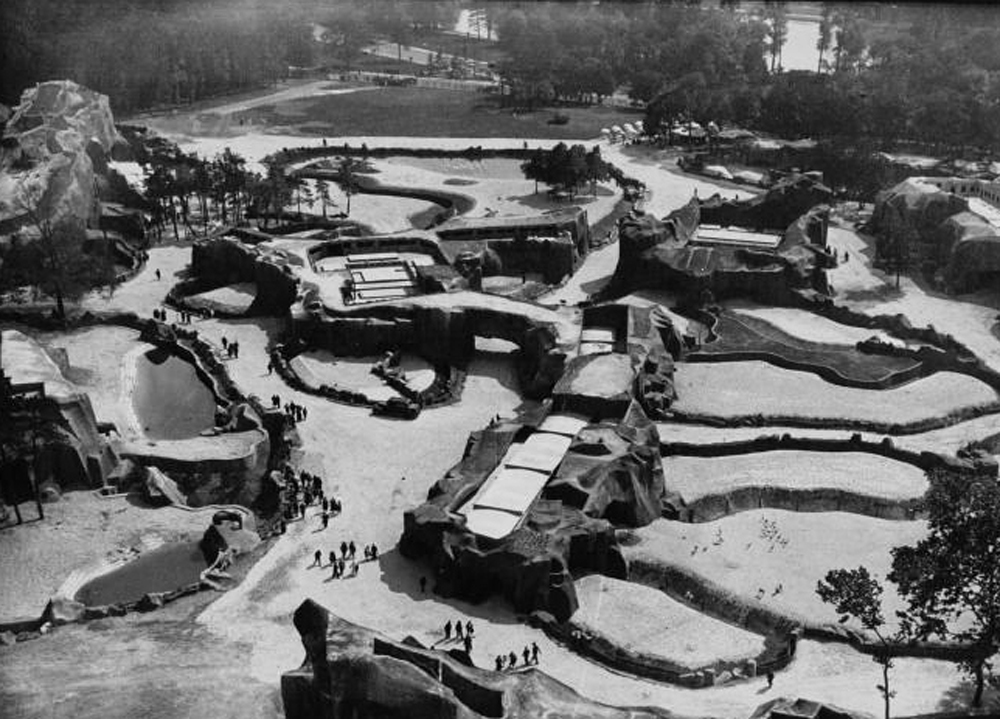
Zoo de Vincennes, Paris 1934
• Architectural Highlights: Opened in 1934, the Paris Zoo was designed by architect Charles Letrosne and landscape designer René Berger, with a distinctly modernist approach.
• Notable Features: The zoo’s main feature is the “Grand Rocher” (Big Rock), an artificial concrete mountain that dominates the zoo’s skyline. This large, sculptural element has a distinctly modernist feel with hints of what would later be seen as brutalism in its raw, imposing concrete.
3. Antwerp Zoo (Zoo Antwerpen) – Antwerp, Belgium
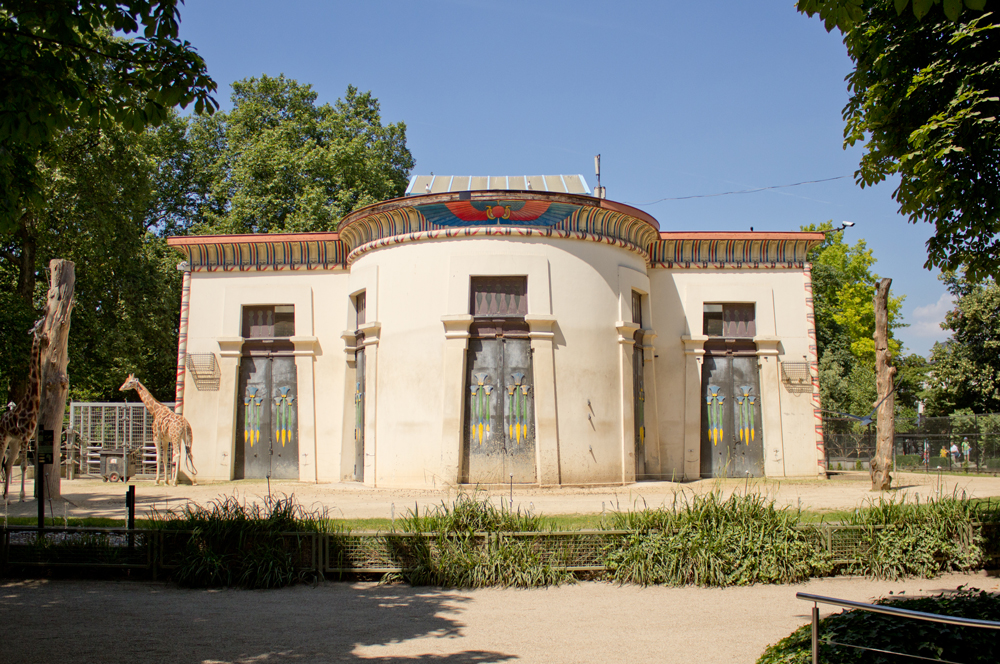
Egyptian Temple, Antwerp Zoo Image Johan Bakker CC BY SA 4.0
• Architectural Highlights: Although Antwerp Zoo dates back to the 19th century, the zoo incorporated modernist ideas in some of its newer 20th-century structures, including renovations and expansions from the 1930s.
• Notable Features: The Egyptian Temple, originally designed in the 19th century but expanded in the 1930s, received modernist touches during the early 20th century as the zoo adapted to newer styles and building techniques.
4. Zoo Zurich (Zoologischer Garten Zürich) – Zurich, Switzerland
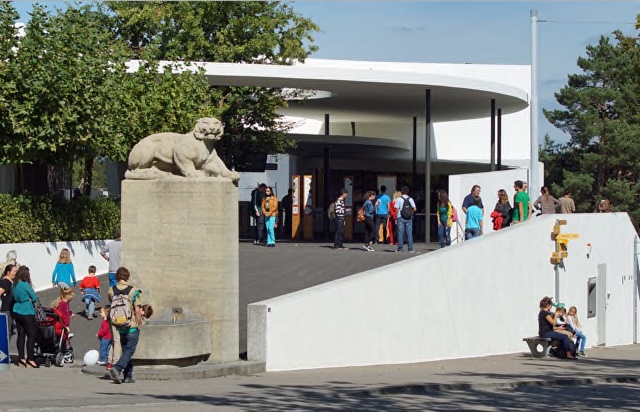
Zurich Zoo with Sumatra Tiger Sculpture by Rudolf Wening Image AlbinfoCC BYSA3.0
• Architectural Highlights: Though most of Zoo Zurich’s modernist architecture emerged later, some earlier pavilions and enclosures were built in a functional, minimalistic style influenced by modernist principles.
• Notable Features: Early structures here emphasized simplicity and integration with natural surroundings, with an increasing focus on functional and aesthetic considerations typical of modernism in zoo design.
5. Tierpark Hagenbeck (Hagenbeck Zoo) – Hamburg, Germany
• Architectural Highlights: Hagenbeck Zoo, while originally founded in the 19th century, introduced innovative “barless” enclosures in the early 20th century that aligned with modernist ideas of open, functional design.
• Notable Features: Although not brutalist or high modernist in the traditional sense, Hagenbeck’s use of open-air, naturalistic enclosures broke from older cage-like styles and influenced modernist zoo design. This approach emphasized functionality and animal well-being over purely ornamental structures, an idea central to modernism.
See for yourself!




